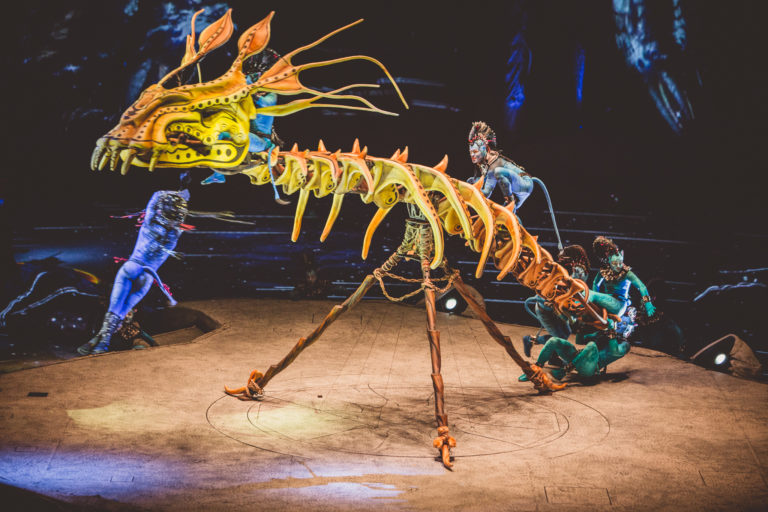Frequent flier
Wednesday, December 7, 2016

If someone asked what I do for a living, I would say I’m an acrobat in the circus. If they asked which circus, I’d say Cirque du Soleil.
I’ve been with Cirque du Soleil for seven years. I was in the shows Viva Elvis and Ka in Las Vegas, and I currently perform in Toruk, which is a world tour. Toruk is based on the movie Avatar. I play a Na’vi character, and it’s a challenge working with a tail. I spent a year getting used to having an extra limb and now it’s practically part of me.
After graduating from UIC with a degree in Movement Science, I worked as assistant strength and conditioning coach for UIC athletes. I enjoyed that, but I was not ready to be done with gymnastics and performing, and I continued to train and stay in competitive shape. A friend’s mom, Olympian Diane Kelley, told me her daughter, who had competed in gymnastics at University of Minnesota, was performing in an acrobatic show in San Diego called Cirque de la Mer. I learned the show was having auditions in Las Vegas, and I booked a flight and I made the cut! The show consisted of tumbling and high dives, and I learned how to do flying trapeze into the water and Chinese poles.
It was my dream to be a part of Cirque du Soleil, and performing at Cirque de la Mer was my first step. I learned everything I could and perfected my tricks until they were good enough to videotape. I sent my tape to Cirque du Soleil and continued to train in the hope they would one day call. I didn’t hear from them for two years. I moved to Alaska to be closer to my sister Lauren and coached gymnastics at Anchorage Gymnastics Association. I was ice fishing when I received a call from Cirque du Soleil asking if I could move to Montreal the following week.

The biggest difficulty in transitioning from gymnast to a professional acrobat is that there’s no “off-season.” In gymnastics, you push through injuries because you can rest during the off-season. When you’re performing in a year-round show, as soon as you feel an injury coming on, no matter how minor, you need to take care of it. In gymnastics, you’re the only person performing on an apparatus. In Cirque du Soleil, there are multiple people on one apparatus, and you’re partnering with each other. There’s a lot of trust involved in group acts, and that trust comes with hours of training. I’m actually afraid of heights but I like to challenge myself and overcome that fear every day. While performing in Ka in Las Vegas, I did an aerial harness act 100 feet off the ground as well as a 60-foot fall onto an airbag.
Peter and Mary Jansson were my coaches at UIC, and they focused on mentally rehearsing our routines and conditioning our bodies to avoid injury. I’ve been able to carry that discipline over to performing in shows. It’s important for me to focus on proper technique in every movement and block out negative thoughts. Performing the show is a workout in itself. We do two shows a day and are literally running around for four hours. We have trainings for specific acts to create new tricks. We also do our own personal conditioning.
I hesitate to say this, but there’s no downside to my job. I get to flip for a living while traveling the world with my closest friends! We work together, live together, travel together — they are my family away from home. We have a fantastic catering team that travels with our show and cooks our meals. Every ten weeks we get two weeks off to rest our bodies. Cirque du Soleil really takes care of us. It’s hard to put a timeline on a career as an acrobat. I know a few acrobats over 50 who are still performing, so it is possible. It’s just important to stay healthy and keep up with conditioning. I plan to perform as long as I can. I can’t imagine doing anything else. It’s been a dream come true and I couldn’t ask for more.